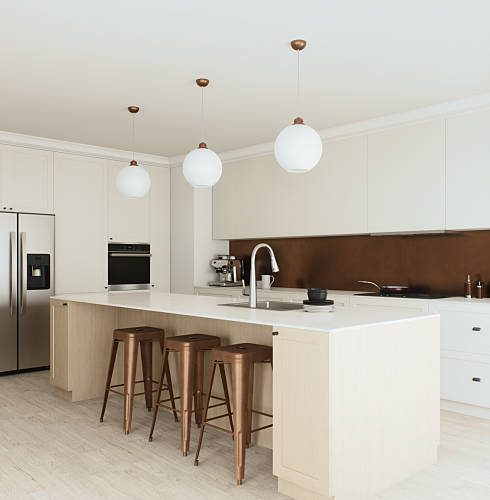The heart of any home deserves careful consideration when planning updates or changes. Modern kitchens serve multiple purposes beyond basic meal preparation. They serve as family gathering spaces and entertaining areas for guests, and often function as command centers for busy households. The challenge lies in creating a space that accommodates all these needs while maintaining a visually appealing appearance.
Successful kitchen renovation requires thoughtful planning that addresses both practical requirements and aesthetic preferences. The process involves evaluating current workflows, identifying pain points, and envisioning how the space will be utilized on a daily basis. Storage needs, appliance placement, and traffic patterns are crucial in determining the final design. The following strategies provide a roadmap for achieving this delicate balance between form and function.
Assessing Current Layout and Workflow Patterns
Understanding existing kitchen dynamics forms the foundation of effective renovation planning. Daily cooking routines reveal natural movement patterns and highlight areas of improvement. Traffic flow analysis shows where congestion occurs and identifies opportunities for better space utilization. Cabinet accessibility, counter space distribution, and appliance positioning contribute to overall kitchen efficiency. Most homeowners discover that minor adjustments can yield significant improvements in functionality. Relocating frequently used items to more convenient locations often eliminates unnecessary steps during meal preparation.
Strategic Storage Solutions That Enhance Design
Effective storage systems eliminate clutter while contributing to the overall aesthetic appeal of the space. These storage approaches maximize functionality while maintaining clean, sophisticated appearances. Strategic implementation of various storage types creates comprehensive organization systems.
Key storage solutions that merge function with style include:
- Custom cabinetry – maximizes every inch of available space while creating seamless visual lines throughout the room
- Pull-out drawers and lazy Susans – Organize contents efficiently while maintaining easy access to frequently used items
- Glass-front cabinets – Display attractive dishware while providing practical storage for everyday items
- Open shelving systems – Create visual interest and showcase decorative pieces alongside functional items
- Hidden storage compartments – Keep small appliances and specialty tools readily available without creating visual chaos
- Built-in pantry systems – Organize food items systematically while maintaining clean, uncluttered surfaces
Selecting Materials That Merge Durability With Aesthetics
Material selection has a significant impact on the longevity and visual appeal of any kitchen space. Countertop materials must withstand daily use while complementing the overall design scheme. Natural stone options, such as granite and quartz, offer exceptional durability alongside timeless beauty. Engineered surfaces provide consistent patterns and colors while requiring minimal maintenance over time. Flooring choices affect both comfort and style throughout the kitchen area. Hard surfaces like ceramic tile and luxury vinyl provide easy cleanup and long-term durability.
Appliance Integration and Placement Strategies
Modern appliances blend seamlessly into kitchen designs when properly integrated into the plan. Built-in refrigerators and dishwashers maintain clean lines while providing full functionality. Range placement affects both cooking efficiency and ventilation requirements. Island configurations often accommodate additional appliances while creating natural gathering spaces for family interaction and socialization. Energy efficiency considerations influence appliance selection without compromising performance or style. LED lighting reduces energy consumption while providing superior task illumination.
Color Schemes and Finishing Touches
Color selection creates the foundation for the entire kitchen atmosphere. Neutral palettes provide timeless appeal and flexibility for future updates. Bold accent colors can be incorporated through backsplashes, hardware, or decorative elements without overwhelming the space. Lighting design highlights architectural features while ensuring adequate illumination for all kitchen tasks. Hardware selection ties together all design elements while providing functional benefits. Cabinet pulls and knobs should complement the overall style while offering a comfortable grip and smooth operation.
A well-executed kitchen renovation can transform the look of your space and how it functions in daily life. Balancing functionality with style requires careful planning and attention to every detail of the renovation process. Success depends on understanding personal needs, selecting appropriate materials, and working with experienced professionals who can bring the vision to life. The investment in quality design and installation pays dividends through years of enhanced daily living and increased home value.
